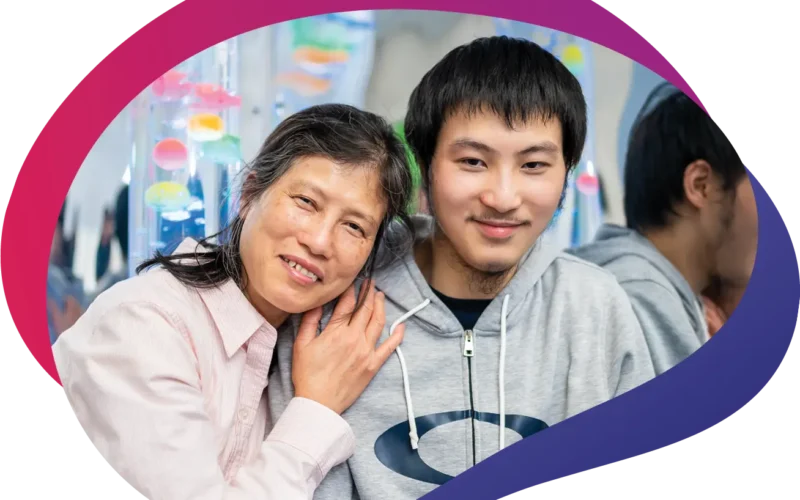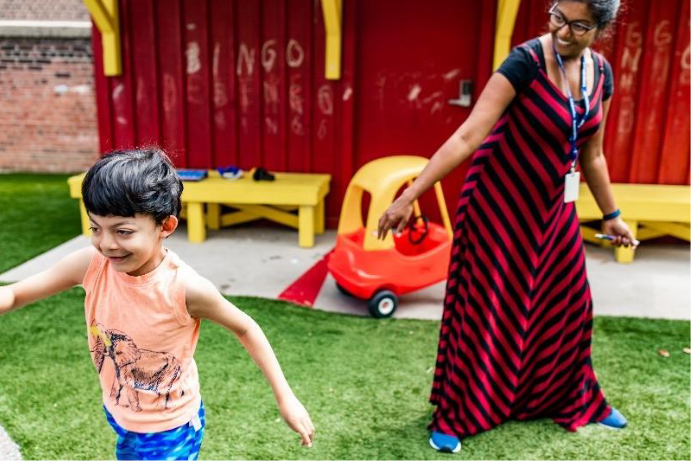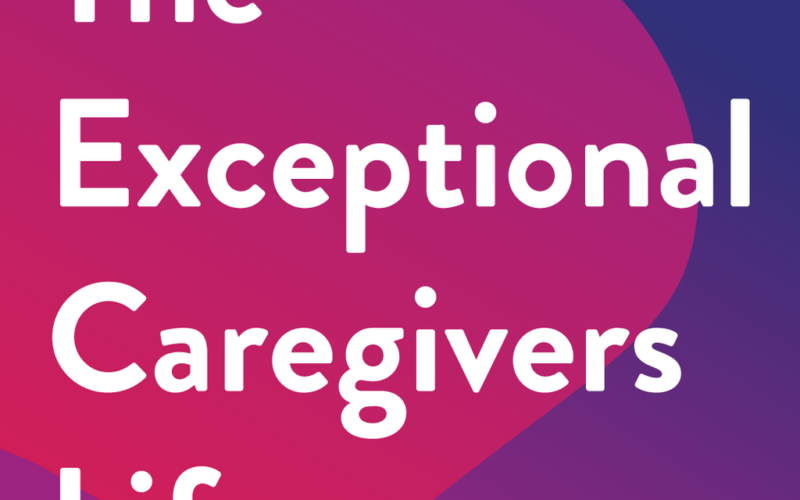In 2007, April 2nd was designated as World Autism Awareness Day by the United Nations General Assembly to help raise awareness for autism as a growing global health priority.
In celebration of World Autism Awareness Day, we caught up with our Clinical Director, Dr. Nancy Freeman, to learn more about autism spectrum disorder.
1. Surrey Place: What is autism? And why is it sometimes referred to as autism spectrum disorder?
Dr. Freeman: Autism is a neurodevelopmental disorder that begins early in a child’s development, with impairments in social interaction, communication and behaviour. There are three areas of social communication differences. The first area is difficulties in what is called social-emotional reciprocity, which means things like conversational turn-taking might be difficult, not sharing in the interests of others, or not initiating interaction with or responding to others. Second, people with autism have differences in communication skills. These differences might include unusual, reduced, or absent eye contact, reduced or absent gestures (e.g., not pointing out things of interest, shaking head no or nodding yes), to individuals more significantly affected who don’t show facial expressions. The third area of social difference is in relationships. People with autism have difficulties developing and understanding relationships. For some, this might mean not knowing that you need to behave differently in different situations, difficulties making friends, or not being interested in having friends.
People with autism also have behavioural differences that are restricted and repetitive. For example, they may repeat movements (e.g. waving hands up and down) or speech (“echoing”), flip objects or line up toys. They may be much less flexible and become quite distressed if things are changed. Interests may be restricted and quite intense. Finally, there may be oversensitivity or under-sensitivity to sensory input, including sounds, smells, textures, vision, pain and temperatures.
The name autism spectrum disorder reflects the wide variety of characteristics and the variability of the severity of symptoms seen in people with autism. This is why you may hear the expression: “if you’ve met one person with autism, you’ve met one person with autism.”
2. Surrey Place: Can you tell us more about the spectrum?
Dr. Freeman: The spectrum ranges from people who speak in full sentences but struggle with conversations or friendships, to people who are very significantly affected by autism, do not speak or have any alternative system of communication and need very substantial support in many areas of their daily care. To reflect the continuum of need for those on the spectrum, in 2013 the diagnostic system (DSM-5) moved to specify three levels of support needs: Level 1, “requiring support,” Level 2, “requiring substantial support,” and Level 3, “requiring very substantial support.” A proportion of people on the autism spectrum also have an intellectual disability. As I mentioned earlier, recent Canadian research has reported an increased incidence of psychiatric diagnoses and mental health challenges compared to both the general population and relative to people with an intellectual disability.
3. Surrey Place: How does someone get diagnosed? And at what age is a diagnosis possible?
Dr. Freeman: A psychologist or physician with specialized training and knowledge about typical development and differences in development can make a diagnosis. A thorough assessment uses systematically administered tools and includes; evaluation of the child’s developmental, cognitive and adaptive levels and autism symptomatology; parent interview; developmental history including medical, hearing, and vision status; and direct observation and interaction with the child, preferable on more than one occasion and in more than one setting. All three social differences must be present, and at least two of the four behavioural differences. The differences must be present early in a child’s development, although some people are not diagnosed until later, sometimes much later.
To receive a professional diagnosis, the symptoms must cause clinically significant impairment in social, occupational, or other important areas of functioning. There is also a specification of whether autism is or is not accompanied by intellectual impairments or other disorders. Characteristics of autism can often be detected between 12-18 months. Although the younger a child is, the more challenging it is, a reliable diagnosis may be made as early as two years, and Canadian research following infant siblings of children with autism has reported diagnosis between 18 to 36 months.
4. Surrey Place: Do the signs and symptoms of autism change over time? And if so, how?
Dr. Freeman: Yes, similar to many children, there can be maturational changes. The core social-communicative and behavioural features of autism remain but can appear different over time. As a child develops, differences may become more evident, as social interactions of peers become more sophisticated. For example, in young children, social differences may be seen in differences in play skills, but as children get older, difficulties in taking another’s perspective can be more evident. It’s important to emphasize that for children who receive evidence-based intervention early in development, there can be much better outcomes. Adolescence and young adulthood can result in added challenges. Canadian research suggests that young adults on the autism spectrum are five times more likely than the general population and almost twice as likely as same-age peers with other forms of developmental disability to receive at least one psychiatric diagnosis.
5. Surrey Place: Are there any resources that you recommend for parents and families who have a child with autism?
Dr. Freeman: Yes! We have many resources available on our website here, and we are always developing more.
6. Surrey Place: There’s a lot of misunderstandings about an autism diagnosis, what’s one misconception that you’d like to clear up?
Dr. Freeman: The single most important misconception to dispel is that vaccines cause autism. This is untrue and dangerous. The original research paper that spread this false information has been thoroughly discredited. The paper was also retracted by the journal which published it, and the author lost his medical license. Unfortunately, to this day, some parents have lingering concerns and may hesitate to vaccinate their children against life-threatening diseases.
7. Surrey Place: And final question, what do you think is Surrey Place’s greatest strength as an autism service provider?
Dr. Freeman: Surrey Place has a history of over 50 years of providing professional services across the lifespan to people on the autism spectrum. We offer a broad range of integrated, evidence-based services beginning with toddlers, through childhood, adolescence, and adulthood, and are here to support parents and families. Our vision is to help you live your potential – all your life.
Surrey Place: Thanks for answering our questions today!
To learn more about our Autism Services, visit our autism page.


